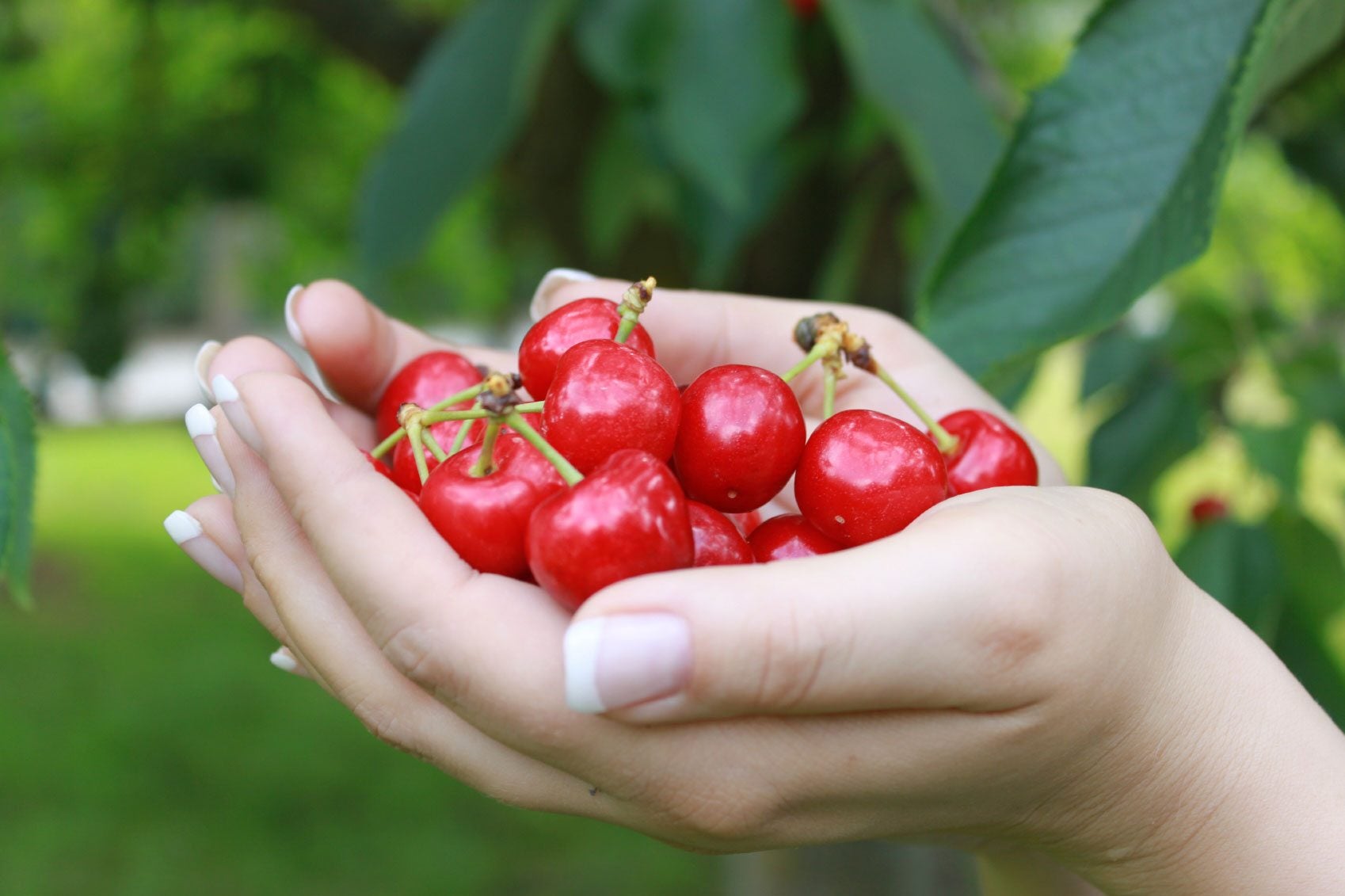Cherry Tree Harvesting: How And When To Pick Cherries

Cherry blossoms herald the onset of spring followed by the long, warm days of summer and their sweet, juicy fruit. Whether plucked straight from the tree or cooked into blue ribbon pie, cherries are synonymous with fun in the sun. How then do you know when to pick cherries?
When to Pick Cherries
Both sweet cherries (Prunus avium) and tart cherries (Prunus cerasus) can be planted in USDA plant hardiness zones 5 through 8. The variety of the cherry tree, weather, and temperature all determine when cherry picking is nigh. To get the maximum production from a cherry tree, it should also be planted in moist, well-draining and fertile soil in a full sun exposure of at least eight hours a day. Sweet cherries bloom earlier than tart and will be ready for cherry tree harvesting prior to their cousins. Also, as with any fruiting tree, cherries must be properly pruned to ensure optimal production. Cherry trees must also be watched for any signs of disease or insect infestation which will drastically affect the quantity and quality of the fruit. It's not only insects that feed on cherries, birds adore them just as much as you do. Either make the decision to share with the birds, or cover the entire tree with plastic netting or use scare tactics like hanging aluminum tins or inflatable balloons dangling from the tree branches to deter the birds. Once you have covered the basics and a plentiful cherry tree harvesting is imminent, we still have the question of how to harvest cherry fruit.
Harvesting Cherries
One mature, standard sized cherry tree will generate an astounding 30 to 50 quarts (29-48 L.) of cherries a year, while a dwarf cherry produces about 10 to 15 quarts (10-14 L.). That's a lot of cherry pie! The sugar content rises significantly in the last few days of ripening, so wait to harvest the fruit until it is completely red. When the fruit is ready, it will be firm and fully colored. Sour cherries will come off the stem when they are ripe enough to be harvested, while sweet cherries should be tasted for maturity. Cherries will not ripen once removed from the tree, so be patient. You will likely be picking cherries every other day for a week. Harvest as quickly as possible if rain is imminent, as rain will cause the cherries to split. Harvest cherries with the stem attached if you are not planning on using them right away. Be careful not to tear off the woody fruit spur, which continue to produce fruit each year. If, however, you are picking cherries for cooking or canning, they can just be pulled off, leaving the stem behind on the tree. Cherries can be stored at cool temperatures such as 32 to 35 degrees F. (0-2 C.) for ten days. Place them in perforated plastic bags in the refrigerator.
Gardening tips, videos, info and more delivered right to your inbox!
Sign up for the Gardening Know How newsletter today and receive a free copy of our e-book "How to Grow Delicious Tomatoes".

Amy Grant has been gardening for 30 years and writing for 15. A professional chef and caterer, Amy's area of expertise is culinary gardening.
-
 Looking For Plants To Give You The Soft And Fuzzies? Try These 5 Fuzzy Leaf Plant Options
Looking For Plants To Give You The Soft And Fuzzies? Try These 5 Fuzzy Leaf Plant OptionsLovers of texture, drama, silver foliage and tactile plants will adore these special sensory garden additions. These fuzzy leaf plant options will leave you all aglow
By Susan Albert
-
 Get Ready For A Summer Of Hummers! Grow These Full Sun Hummingbird Plants and Flowers
Get Ready For A Summer Of Hummers! Grow These Full Sun Hummingbird Plants and FlowersIf you’re lucky enough to enjoy a sunny backyard, make sure you are maxing out on your pollinator opportunities and grow these full sun hummingbird plants and flowers
By Tonya Barnett